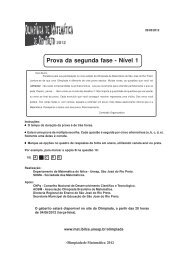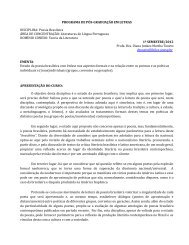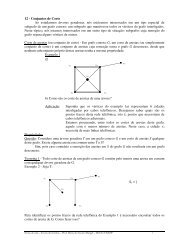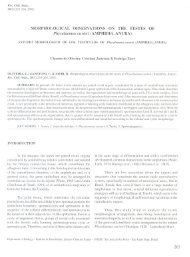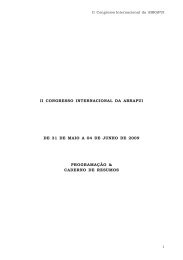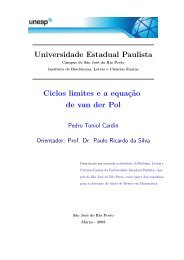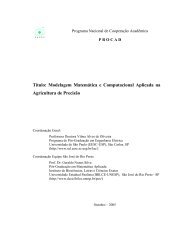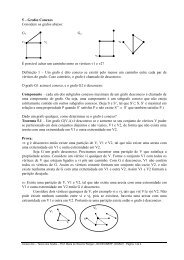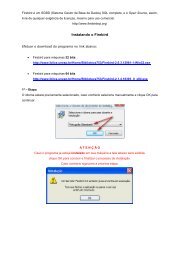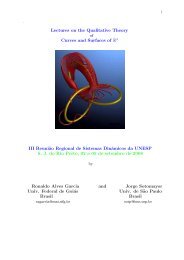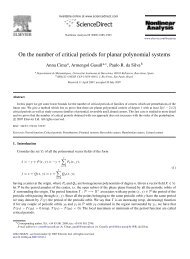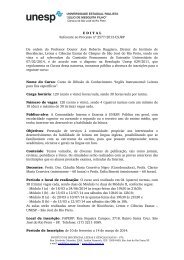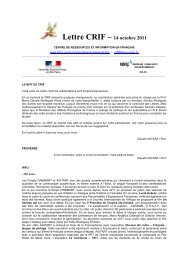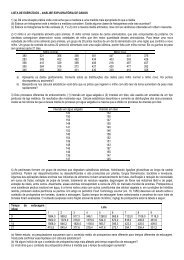Equações Diferenciais Ordinárias (notas de aula) - Unesp
Equações Diferenciais Ordinárias (notas de aula) - Unesp
Equações Diferenciais Ordinárias (notas de aula) - Unesp
Create successful ePaper yourself
Turn your PDF publications into a flip-book with our unique Google optimized e-Paper software.
3 Equações não-lineares <strong>de</strong> primeira or<strong>de</strong>me obtemosé exata.x(1 + tx)dt − 1 x 2 x tdx = 02( 1 x + t)dt − 1 tdx = 0 (3.25)x2 Assim, µ(t, x) = 1 x 2 é fator integrante <strong>de</strong> (3.24) no conjunto Ω ={(t, x) ∈ R 2 : x ≠ 0}.Para resolver (3.25) proce<strong>de</strong>mos∫u(t, x) = ( 1 x + t)dt + ϕ(x) = t x + t2 2 + ϕ(x).Mas como ∂u∂x = − tx + 2 ϕ′ (x) temos que ϕ ′ (x) = 0, isto é, ϕ = c. Portantotoda solução x = x(t) satisfaz a seguinte equação implícitaDesta equação temos quex =tx + t2 = C, C ∈ R.22t2C − t , C ∈ R, para t tal que 2c − 2 t2 ≠ 0.Observe que neste exemplo o fator integrante já foi dado µ(t, x) = 1 x 2 .Surge naturalmente a pergunta como encontrar o fator integrante?isto é,German Lozada CruzMatemática-IBILCEIBILCE-SJRPSe a equação diferencial (3.23) é exata, entãoou seja∂(µM)= ∂(µN) ,∂x ∂tµ ∂M∂x + M ∂µ∂x = µ∂N ∂t + N ∂µ∂t ,M ∂µ∂x − N ∂µ ( ∂N∂t = µ ∂t − ∂M ).∂x72



